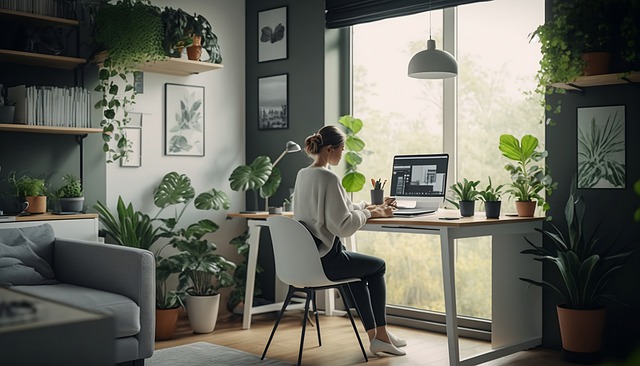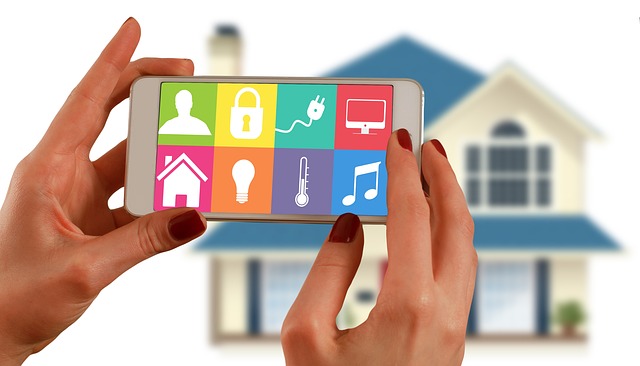The home office has become an essential part of modern living in recent years, driven by the rise of remote work and hybrid work models. The evolution of home office design continues to reflect the changing needs and preferences of the workforce. From ergonomic solutions to sustainable materials, home office trends are geared toward creating spaces that enhance productivity, comfort, and well-being. This article explores 10 top home office design tips, providing inspiration and practical ideas for transforming your workspace.
1. Home Office Design Tips for Hybrid Workspaces
Definition and Need The hybrid work model combines remote and in-office work and is becoming increasingly prevalent. This shift necessitates adaptable and multifunctional home offices that accommodate professional and personal activities.
Key Features Hybrid workspaces are characterized by their flexibility. Key features include modular furniture that can be easily reconfigured, multi-purpose areas that serve various functions, and technology integration that supports seamless transitions between work and leisure.
Examples: a desk that doubles as a dining table or a bookshelf that can be converted into a standing desk is perfect for hybrid workspaces. These solutions ensure that your home office can quickly adapt to daily needs.
2. Ergonomic Design
Importance of Ergonomics Ergonomic design is crucial for maintaining health and enhancing productivity. Poor ergonomics can lead to discomfort and long-term health issues, so investing in furniture that supports good posture and reduces strain is essential.
Key Elements Key ergonomic elements include adjustable chairs supporting the spine, desks tailored to the user’s height, and proper lighting that reduces eye strain. Accessories such as keyboard trays and footrests also contribute to an ergonomic setup.
Future Trends: Expect innovative ergonomic furniture combining style and functionality. For example, desks with built-in cable management systems and chairs with advanced lumbar support mechanisms are gaining popularity.
3. Sustainable and Eco-Friendly Materials
Sustainability Trends Sustainability is a growing concern in home office design. There is an increasing demand for eco-friendly materials that reduce environmental impact and promote health.
Critical Materials Sustainable materials such as recycled wood, bamboo, and reclaimed metal are becoming mainstream. These materials minimize waste and add a natural, aesthetic appeal to the workspace.
Design Ideas: Consider incorporating eco-friendly furniture, such as desks made from reclaimed wood, chairs with natural fabric upholstery, and accessories crafted from recycled materials. These choices contribute to a greener home office while maintaining a stylish look.
4. Technology Integration
Smart Home Offices Technology integration transforms home offices into innovative workspaces that enhance efficiency and comfort. Smart home offices incorporate advanced technologies to create a more connected and streamlined environment.
Key Technologies Key technologies include brilliant desks that adjust height automatically, wireless charging stations embedded in desks, and integrated lighting systems that adjust brightness based on the time of day. Voice-controlled devices and virtual assistants also play a significant role in modern home offices.
Future Trends Looking ahead, we can expect further advancements in home office technology. Innovations like AI-powered task management systems, intelligent ergonomic chairs that adjust based on user movement, and immersive virtual reality setups for meetings are on the horizon.
5. Biophilic Design
Concept Biophilic design emphasizes the connection between humans and nature, bringing natural elements into the workspace to improve well-being and productivity.
Key Features Key biophilic design features include using natural light, incorporating plants, and using organic materials like wood and stone. These elements create a calming and stimulating environment.
Benefits Biophilic design has been shown to reduce stress, enhance creativity, and improve overall well-being. Adding plants, using natural light sources, and incorporating water features can make your home office a more pleasant and productive place to work.
6. Home Office Design Tips for Minimalist and Clutter-Free Spaces
Minimalism in Home Offices Minimalism continues to be a strong trend in home office design. A minimalist workspace promotes focus and productivity by reducing visual clutter and creating a sense of order.
Design Strategies To achieve a minimalist look, use clean lines, neutral color palettes, and simple, functional furniture. Practical storage solutions, such as built-in shelves and hidden compartments, help organize the workspace.
Examples: A minimalist home office might feature a sleek desk with integrated storage, a few essential decor items, and a well-organized shelving system. The focus is on simplicity and functionality, creating a serene and efficient work environment.
7. Home Office Design Tips for Personalized Workspaces
Customization Trends Personalization is critical to creating a comfortable and inspiring workspace. Tailoring the home office to individual preferences can enhance motivation and productivity.
Design Elements Personalized decor, custom furniture, and unique layouts are all part of this trend. Consider adding personal touches like family photos, artwork, and favorite books to make the space more inviting.
Benefits: A personalized workspace reflects your personality and work style, making it a place where you enjoy spending time. This can boost morale and make work more enjoyable.
8. Home Office Design Tips for Multifunctional Furniture
Versatility in Design Multifunctional furniture is essential for maximizing space and versatility in home offices. These pieces are designed for multiple purposes, making them ideal for small or hybrid workspaces.
Key Pieces Convertible desks, storage-integrated furniture, and modular units are key examples. Practical solutions include a desk that adjusts to different heights or a chair that doubles as storage.
Innovative multifunctional furniture ideas include fold-out desks that disappear when unused, storage ottomans that provide seating and hide clutter, and modular shelving units that can be reconfigured as needed.
9. Color Trends for Home Offices
Popular Colors: The color scheme for home offices should focus on creating a calm and inspiring atmosphere. Soft neutrals, warm earth tones, and muted pastels are popular choices.
Psychological Impact Colors can significantly influence mood and productivity. For example, blue tones promote calm and focus, while green shades enhance creativity and reduce stress.
Design Ideas Incorporate trending colors through paint, furniture, and accessories. For example, a soft blue wall, a green accent chair, or pastel decor items can add a touch of color without overwhelming the space.
10. Wellness-Focused Design
Focus on Well-being Wellness-focused design prioritizes the physical and mental well-being of the user. This trend incorporates elements that promote comfort, relaxation, and health.
Key Features: Comfortable seating, natural light, and designated relaxation zones are vital features. Consider ergonomic chairs, large windows, and quiet areas for breaks.
Trends Wellness-centric home office designs include adjustable standing desks, air purifiers, and soundproofing elements to create a healthier and more productive workspace.
Conclusion for Home Office Design Tips
Home office design continues to evolve, reflecting the changing needs and preferences of the modern workforce. From hybrid workspaces to wellness-focused designs, the trends outlined in this article offer a range of ideas to enhance your home office. By incorporating these home office design tips, you can create a workspace that is functional, stylish, and conducive to productivity and well-being. Happy decorating!



